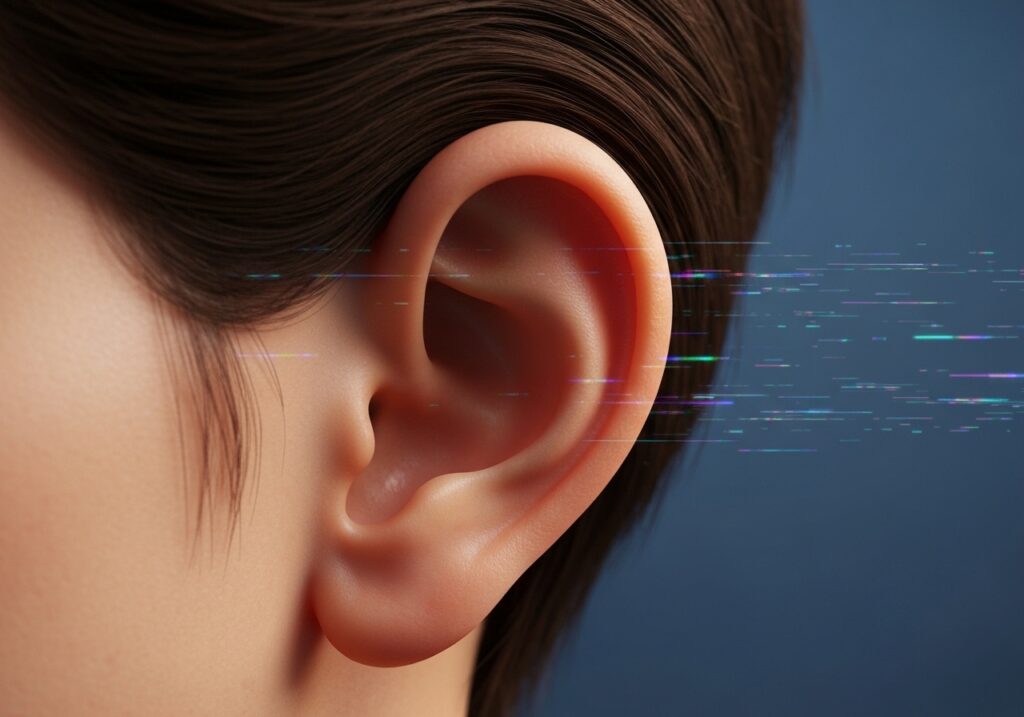HOW ANYONE CAN DETECT AN AI VOICE AND AVOID BEING FOOLED
In an era where artificial intelligence increasingly blurs the lines between reality and simulation, distinguishing genuine human voices from sophisticated AI-generated audio has become a critical skill. From deepfake scams to AI-powered misinformation campaigns, the ability to identify synthetic speech is more important than ever. While AI voice technology continues to advance at a rapid pace, mimicking human intonation and emotion with startling accuracy, tell-tale signs often remain. By training your ear and understanding the subtle imperfections inherent in current AI models, you can significantly improve your chances of detecting an AI voice and protecting yourself from being misled.
THE RISE OF SYNTHETIC VOICES AND THE NEED FOR VIGILANCE
The proliferation of AI-generated content has transformed various industries, from entertainment and marketing to customer service and education. AI voice generators, initially identifiable by their robotic, monotonous tones, have evolved dramatically. Modern AI voices can replicate specific human voices, speak in multiple languages, and even convey a range of emotions. This technological leap, while offering immense benefits, also presents significant challenges. The ease with which convincing synthetic audio can be produced opens doors for malicious actors to create highly believable, yet entirely fake, audio clips for nefarious purposes. This makes it imperative for individuals to develop a keen sense of auditory discernment.
SUBTLE ACOUSTIC ANOMALIES AND GLITCHES
Despite their advancements, AI voices are not perfect replicas of human speech. Close listening can often reveal minute irregularities that betray their artificial origin. These inconsistencies are often more apparent in less sophisticated models or when AI attempts to generate speech under complex conditions, such as multilingual outputs or varied emotional contexts.
IMPERFECT PRONUNCIATION AND EMPHASIS
One of the most common giveaways in AI-generated audio is the occasional mispronunciation of words, particularly proper nouns, less common vocabulary, or words borrowed from other languages. While humans might also mispronounce words, AI often does so with a distinct, unnatural quality. This isn’t just about getting the phonetics wrong; it can also involve incorrect emphasis on syllables or words within a sentence. For instance, an AI might place stress on an insignificant word, making the sentence sound peculiar, or fail to appropriately emphasize key terms that a human speaker naturally would for clarity or emotional impact. In multilingual audio, these flaws become even more pronounced, with accents or pronunciations of foreign words often sounding distinctly “off” to a native speaker.
UNNATURAL SOUND ARTIFACTS
Beyond pronunciation, listen for subtle sound artifacts. Early AI models often produced a metallic or robotic echo, but modern ones have largely overcome this. However, some synthetic voices might still exhibit:
- Inconsistent Volume or Pitch: Sudden, inexplicable shifts in volume or pitch that don’t align with natural speech dynamics.
- Sibilance Issues: An overemphasis or distortion of “s” or “sh” sounds, making them sound hissing or artificial.
- Unnatural Reverb or Dryness: The sound might be too “dry” (lacking natural room acoustics) or have an artificial, constant reverb that doesn’t change with the presumed environment.
- Clipping or Choppiness: Although rare in high-end AI, some models might still produce slight clipping at the beginning or end of words, or a general choppiness in transitions between phrases.
These subtle glitches, often difficult to pinpoint individually, contribute to an overall sense that something isn’t quite right with the audio.
THE LACK OF HUMAN RHYTHM AND NATURAL FLOW
Human speech is characterized by its organic, often imperfect, rhythm. We pause to breathe, to think, or for dramatic effect. We use filler words, change our pace, and occasionally stumble. AI often struggles to convincingly replicate this inherent unpredictability.
ABSENCE OF ORGANIC PAUSES AND HESITATIONS
A tell-tale sign of AI-generated audio can be the absence of natural pauses. In human conversation or narration, speakers naturally pause between thoughts, at the end of sentences, or for emphasis. AI, especially older or less advanced models, might produce an unnaturally continuous flow of speech, or place pauses in awkward, illogical places. While editing can sometimes remove natural pauses, a complete lack of them in extended speech is a strong indicator of synthetic origin. Conversely, some AI might overcompensate, inserting pauses that are too regular or uniform, creating a robotic cadence rather than a natural human rhythm.
MISSING BREATHING PATTERNS AND VOCAL FRYS
Humans breathe. It’s a fundamental aspect of vocalization, and our breaths are often audible, even if subtle, in recordings. AI-generated voices often lack these natural breathing sounds, resulting in an unnaturally seamless stream of words. Similarly, other subtle human vocalizations like sighs, vocal frys (the lowest vocal register, often heard at the end of sentences), throat clearings, or even lip smacks are typically absent from AI-generated audio. While advanced AI models are increasingly incorporating these “humanizing” elements, their absence, or their placement in an unnatural context, can be a clear sign that you’re listening to a machine.
EMOTIONAL DISCONNECT OR EXAGGERATION
While AI has made strides in conveying emotion, it often struggles with the nuanced and authentic expression that defines human sentiment. This can manifest in two opposing ways: either a complete lack of emotional depth or an exaggerated, forced portrayal.
OVERLY THEATRICAL DELIVERY
Some AI voices, in an attempt to sound expressive, can become overly emotional, even for mundane content. They might exaggerate excitement, sadness, or surprise to a degree that feels unnatural or performative. The emotion might not fit the context of the words being spoken, or it might be applied with a uniform intensity that lacks the ebb and flow of genuine human feeling. This often makes the voice sound insincere or melodramatic, as if it’s trying too hard to convince the listener of its authenticity.
FLAT OR MONOTONE SPEECH
Conversely, many AI voices still lean towards a flat, monotone delivery, especially if not specifically prompted to convey emotion. While they might achieve perfect pronunciation and rhythm, the absence of natural inflection and emotional range makes them sound distinctly robotic and unengaging. This lack of “soul” or personality is a strong indicator, particularly in contexts where human interaction and empathy are expected, such as customer service or personal stories.
PERFORMANCE UNDER STRESS: SPEED PLAYBACK TEST
A practical method for detecting AI voices is to alter the playback speed of the audio. Humans can generally speak and be understood at varying speeds, and while rapid speech might sound fast, it largely retains its natural qualities. AI voices, however, often betray their artificial nature when accelerated. When played at 1.25x, 1.5x, or even 2x speed, AI-generated audio can become notably robotic, disjointed, or even unintelligible. The synthetic process of generating speech at a base rate struggles to adapt gracefully to significant speed alterations, causing the voice to break down into a series of disconnected sounds rather than a coherent, accelerated flow. This “stress test” can be a remarkably effective way to expose synthetic audio.
THE INTUITIVE “OFF” FEELING
Perhaps the most subjective, yet often accurate, indicator is your own intuition. As humans, we are highly attuned to the subtleties of human speech, having processed countless hours of it throughout our lives. This innate understanding allows us to pick up on minute discrepancies that might be hard to articulate consciously. If a voice just “feels” off, or if something in its cadence, tone, or emotional expression strikes you as unnatural, there’s a strong possibility your gut feeling is correct. The more exposure you have to both genuine human voices and increasingly sophisticated AI voices, the more refined your auditory intuition will become. Trusting this instinct, especially when combined with other indicators, can be a powerful detection tool.
THE EVOLVING LANDSCAPE OF AI AUDIO
It’s crucial to acknowledge that AI voice technology is constantly improving. Companies and researchers are investing heavily in making AI voices indistinguishable from human ones, focusing on incorporating more naturalistic elements like breaths, hesitations, and complex emotional nuances. This ongoing development means that detection methods that work today might become less effective tomorrow. While advanced AI models can now produce incredibly convincing speech, making it challenging to differentiate from human voices, users can even access sophisticated AI audio generators like the one available via aiorbit.app/audio-assistant/ to experiment with text-to-speech technology. This arms race between AI generation and detection underscores the need for continuous learning and adaptation in our approach to digital media literacy.
BEYOND THE VOICE: CONTEXTUAL CLUES
Detecting an AI voice shouldn’t rely solely on auditory cues. Often, the audio is part of a larger piece of content, such as a video, podcast, or phone call. Look for additional contextual clues that might expose the synthetic nature of the voice:
- Visual Discrepancies: If it’s a video, do the speaker’s lip movements precisely match the audio? Are there any unnatural facial expressions or body language?
- Source Credibility: Is the source of the audio reputable? Are there other instances of suspicious content from the same source?
- Logical Inconsistencies: Does the content of the audio make sense within the broader context? Is the information presented plausible and verifiable?
- Accompanying Information: Check for any disclaimers, watermarks, or metadata that might indicate AI generation.
Combining auditory detection with a critical evaluation of the surrounding context provides a more robust defense against being fooled by AI-generated content.
PROTECTING YOURSELF IN THE DIGITAL AGE
In an increasingly digital world, vigilance is key. Here are steps you can take:
- Develop Critical Listening Skills: Actively listen for the subtle nuances discussed above.
- Verify Information: Cross-reference any suspicious or emotionally charged audio content with trusted, independent sources.
- Be Skeptical: Maintain a healthy level of skepticism towards unverified audio, especially if it elicits strong emotional reactions or makes extraordinary claims.
- Stay Informed: Keep up-to-date with the latest developments in AI technology and common scam tactics.
CONCLUSION
The ability to detect AI voices is an evolving skill crucial for navigating the modern digital landscape. While artificial intelligence continues to refine its vocal mimicry, understanding the current limitations and common tells can empower you to discern synthetic speech from genuine human communication. By paying attention to natural pauses, acoustic anomalies, emotional authenticity, and how a voice performs under varying conditions, combined with trusting your intuition and examining contextual clues, you can significantly enhance your defenses against misinformation and deception in the age of AI. Staying informed and practicing critical listening will be your most valuable assets in the ongoing effort to distinguish what is real from what is synthetically generated.

